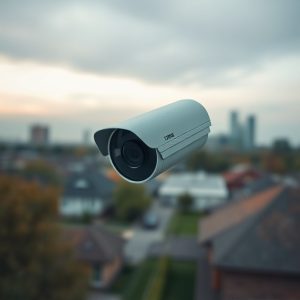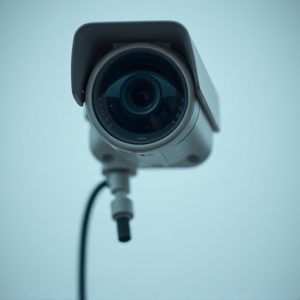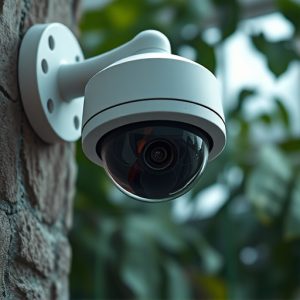Powering Up Dummy Security Cameras: Options & Best Practices
Maximizing the effectiveness of fake security cameras requires understanding and adhering to optimal…….
Maximizing the effectiveness of fake security cameras requires understanding and adhering to optimal height placement guidelines based on installation environment. For commercial spaces, position them higher for comprehensive area coverage, while residential properties benefit from lower heights for discreet angle monitoring. Power options include standard outlets for indoor use and solar-powered solutions for outdoor areas with ample sunlight. Correct power supply selection ensures camera compatibility and performance. Strategic placement at slightly elevated, off-center angles enhances realism without compromising deterrence capabilities. Regular maintenance is crucial for maintaining their integrity and operational effectiveness as deterrent devices.
In today’s digital era, security cameras play a pivotal role in safeguarding properties. For those seeking to enhance home or business security without actual surveillance, dummy security cameras offer a subtle yet effective solution. This article delves into the world of fake camera power options, exploring essential considerations for optimal performance and realism. From understanding your dummy camera’s requirements to choosing the right power source and avoiding common pitfalls, we guide you through every step, including ideal height placement (10-15 feet) for maximum effectiveness.
- Understanding Dummy Security Camera Requirements
- Power Sources for Fake Cameras: Options Explored
- Factors to Consider When Choosing a Power Option
- Common Mistakes to Avoid with Dummy Camera Power
- Best Practices for Installing and Maintaining Fake Security Cameras
Understanding Dummy Security Camera Requirements
When considering dummy security cameras, understanding their height placement requirements is paramount. Unlike real surveillance equipment, fake cameras are designed to deter crime through visual deception, often mimicking the look and placement of genuine security measures. As such, they should be positioned at heights that align with actual camera locations, typically mounted on poles or walls, just like their functional counterparts. This strategic placement sends a clear message to potential intruders, suggesting the presence of active surveillance.
Factors like Fake Security Camera Height Placement vary based on installation environments. For instance, commercial buildings may require cameras placed higher to cover larger areas, while residential properties might focus on lower heights for better angle coverage without appearing overly obtrusive. Understanding these requirements ensures that dummy security cameras serve their intended purpose effectively, providing a realistic deterrent against criminal activity.
Power Sources for Fake Cameras: Options Explored
When it comes to powering dummy security cameras, or fake cameras designed for deception or decoration, there are several reliable and creative options available. These devices often operate on a standard power outlet, making them easy to install and maintain by plugging them into your home’s electrical system. This is particularly convenient for indoor applications, allowing you to strategically place the camera at various heights—from eye-level to high ceilings—without worrying about battery life.
For outdoor use, solar-powered fake security cameras are an eco-friendly and hassle-free alternative. They capture sunlight during the day, storing it in a rechargeable battery, which then powers the device at night. This option is ideal for locations with ample sunlight exposure, ensuring consistent surveillance without requiring any additional wiring or power outlets.
Factors to Consider When Choosing a Power Option
When selecting a power option for your dummy security camera, several key factors come into play, especially considering its height placement. Firstly, assess the camera’s energy requirements. Different models vary in their power consumption, so matching the power supply to the camera’s specifications is vital to ensure optimal performance and longevity. Additionally, the availability of outlets nearby can impact installation ease and cable management, particularly at higher fake security camera heights where access might be limited.
In terms of placement, whether the camera is mounted indoors or outdoors affects power choices. Outdoor cameras, for instance, may require weatherproof power adapters to withstand environmental conditions. Meanwhile, indoor setups might benefit from hidden or discreet power sources to maintain an authentic look while keeping cables out of sight. Additionally, wireless power options can simplify installation and reduce cable clutter, especially in challenging areas with multiple obstructions or hard-to-reach heights.
Common Mistakes to Avoid with Dummy Camera Power
When setting up dummy security cameras, a common pitfall is incorrect height placement, often due to an eye-level perspective. This can make the camera appear inoperable or fake. Remember, the best vantage point for a security camera is usually slightly elevated and off-center, mimicking natural vision. So, avoid mounting your fake camera at eye level on walls or ceilings; instead, opt for a higher position to create a more realistic surveillance effect.
Another mistake to steer clear of is neglecting to power the dummy camera properly. While these cameras don’t require complex wiring, ensuring they have adequate power is crucial. Check that the power source is compatible and provides sufficient voltage. Using an incorrect or inadequate power supply can lead to malfunction or even damage to your fake security equipment, undermining its effectiveness as a deterrent.
Best Practices for Installing and Maintaining Fake Security Cameras
When installing dummy security cameras, or any fake surveillance equipment, getting the placement right is key. Best practice suggests positioning them at a height that mimics real camera locations, typically eye-level or slightly elevated. This strategic placement not only ensures an authentic appearance but also offers a clear line of sight across your property or desired area of monitoring. By keeping these ‘cameras’ at realistic heights, you create the illusion of constant surveillance, deterring potential intruders without drawing unnecessary attention.
Regular maintenance is another critical aspect. Dust and debris can accumulate over time, compromising their realism and effectiveness as deterrent devices. A simple cleaning routine using mild soap and water can help maintain their integrity. Additionally, checking the batteries or power sources regularly ensures these dummy cameras stay operational, providing continuous visual coverage without the need for complex setup adjustments.
When selecting a power source for your dummy security camera, consider factors like ease of installation, reliability, and hidden placement to ensure an authentic appearance. By understanding these requirements, you can avoid common mistakes and maintain the integrity of your security system’s visual presence, effectively deterring potential intruders without compromising aesthetics. Remember, proper height placement and discreet power options are key to a successful and realistic fake security camera setup.


